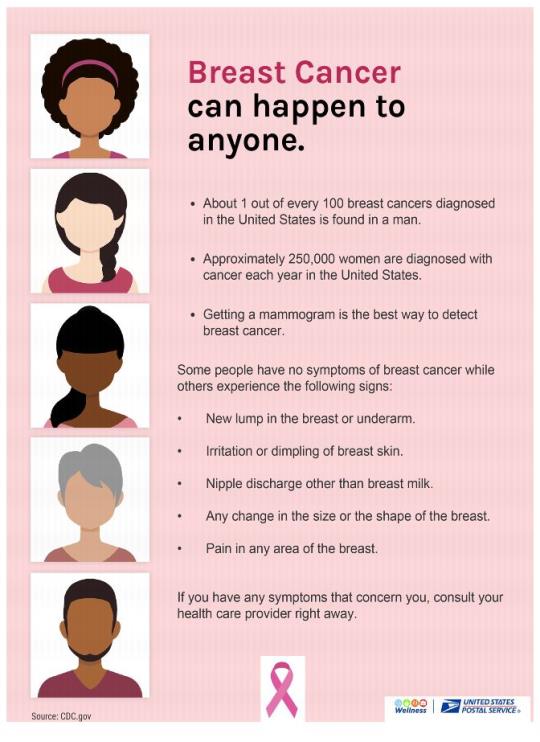October is Breast Cancer Awareness Month1. Breast cancer is a disease in which there is uncontrollable cell growth in the breast. The kind of breast cancer depends on which cells in the breast turn into cancer. While breast cancer is most often found in women, men can get breast cancer, too. About 1 out of every 100 breast cancer patients diagnosed in the United States is a man.
There are many symptoms of breast cancer. Some people have varied symptoms and some people do not have any symptoms at all. Some warning signs of breast cancer are:
n A new lump in the breast or underarm.
n Thickening or swelling of part of the breast.
n Irritation or dimpling of breast skin.
n Redness or flaky skin in the nipple area or the breast.
n Pulling in of the nipple or pain in the nipple.
n Nipple discharge other than breast milk, including blood.
n Any change in the size or the shape of the breast.
n Pain in any area of the breast.
Many factors over the course of a lifetime can influence your breast cancer risk. Some risk factors, such as getting older or your family history, you cannot change. However, you can help lower your risk of breast cancer by:
n Keeping a healthy weight.
n Being physically active.
n Drinking alcohol in moderation.
n Breastfeeding your children, if possible.
n If you have a family history of breast cancer, talk to your doctor about other ways to lower your risk.
Staying healthy throughout your life will lower your risk of developing breast cancer and improve your chances of surviving breast cancer if it occurs.
You can find out more information about breast cancer on the CDC website at cdc.gov/cancer/breast/basic_info.
— Compensation and Benefits,
Human Resources, 10-5-23
